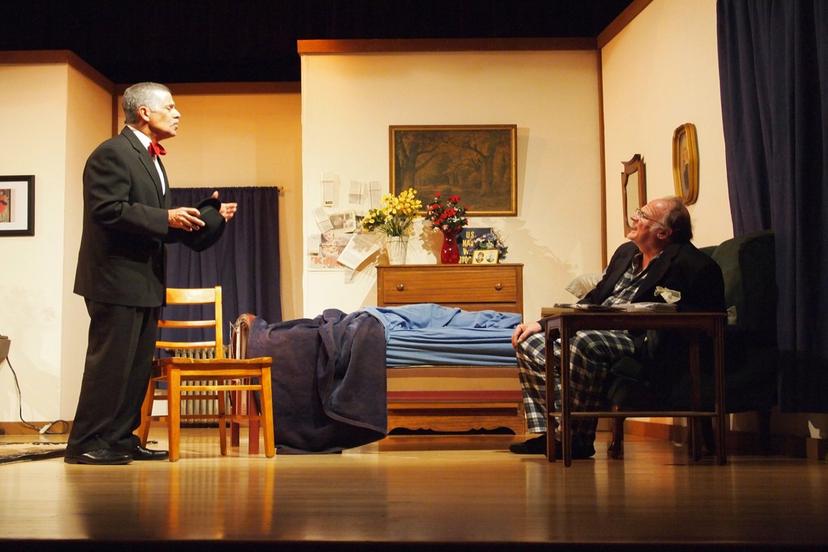Theater

Structure
Two primary types of theater companies operate in the United States: for-profit and nonprofit companies. The for-profit theater companies focus on producing plays that are a commercial success, while nonprofits often have the ability to produce more experimental performances, as long as their contributors support it. In addition to these divisions, there are leading companies in major metropolitan areas, and smaller companies located in smaller cities or smaller, less advantageously located venues in larger cities. Touring companies also exist to take productions on the road from city to city. Theater professionals can also find work as educators and through starting children's theater groups or as coaches or consultants.
For any theatrical performance, the staff involved in executing the production extends far beyond the talent seen on the stage. Workers range from directors to lighting technicians to costume designers to ticket booth clerks and ushers. The performer, however, is the most visible and the best-known theater employee. Actors and actresses perform parts in plays to entertain and inform audiences. They use facial expressions, body movements, voice modulation, and other devices in the performance of their roles. Musical plays require musicians to accompany the singers and play the production's score. Depending on the theater's budget and union requirements, the production may employ only a single instrumentalist or a full orchestra. Musical directors coach the actors on the songs they are to sing during the performance and supervise rehearsals of the musical accompaniments to be performed by the ensemble or orchestra.
Talent agents represent actors, actresses, or other performers and find them appropriate parts. They often know a wide range of producers, directors, and other people capable of hiring talent. Casting directors assist in selecting the appropriate talent for a performance. They work alongside the producer and director of a production.
Producers select plays and scripts to be performed. They raise funds to finance the performance and decide on the size of the production. Directors supervise the production of plays and other performances. They conduct rehearsals and select actors and actresses from auditions. They meet with playwrights or scriptwriters and discuss how to present plays in the most effective manner. They consult with the producer, stage manager, and designers about issues such as scenery and selecting actors. They formulate budgets and schedules. They supervise rehearsals, instructing actors on blocking (stage movement) and the delivery of their parts. They plan how to handle lighting, special effects, and costumes, refining their decisions as the preparations for performance proceed. Throughout the process, stage directors report regularly to the producer on the status of a show, noting any special problems and how closely the show is sticking to the projected budget.
Stage managers help run auditions, attend rehearsals, and write down changes to direction during rehearsal so they can be incorporated into the master directing plan. Assistant directors may direct some elements of the performance and focus on particular performers for coaching and training. For musical plays, choreographers create the movements that accompany songs and other music and then teach it to the performers.
Playwrights are the authors of plays. Some theater companies stage plays that have been produced elsewhere; for these, they must obtain the rights from the script's publisher and pay royalties based on the number of performances, size of the theater, and ticket prices.
Scenery behind the performers sets the mood and the location. Lighting sets mood and highlights movements and performers at key points in the presentation. Properties, more commonly known as props, are either set props or hand props.
Set designers handle all background scenery, props, and stage decorations. To make a set that helps tell the story and establishes time and place, designers must be innovative and creative. A set is created by set painters, stage craftsworkers, and other people involved in conceptualizing what will happen behind and around the performers.
The lighting designer also draws up plans for how each part of the show will be lit. The general lighting, specific illuminations (such as spotlights), and the special-effects lighting are all charted, timed, and choreographed to the performance. Sound amplification, sound effects, and recordings are also well plotted before the performance begins. The sound technicians decide where to place equipment, how much to amplify them, and when to switch them on and off. Body microphones, floor microphones, and boom (hanging) microphones all allow for emphasizing different sounds. Sound boards that control effects, amplification, and recording are controlled by the technicians during the performance. Prompters follow the script of the performance and cue performers as to the timing of their lines. Prompters are often used in musical productions, where they serve as intermediaries between the orchestra and the performers.
Makeup and costuming augment the appearance of the performers and reinforce the mood and story. Even the most basic and simple costumes have been carefully chosen to help tell the story or present the spirit of the piece being performed. Costume directors select and help create the costumes for theater performances. They often work with the director and producer. Costume directors oversee the production of the costumes by designers and seamstresses. Makeup artists apply makeup and other material to performers. They often create elaborate facial decorations to depict age, scars, or injuries.
Theater managers, or house managers, are responsible for the smooth running of the theater's business functions. They supervise box office cashiers, ticket takers, ushers, and other employees who interact with the audience. They oversee the maintenance of the physical facilities both inside and outside the theater, and they ensure that the theater is clean. Road production managers oversee and coordinate the business and operations of a touring theatrical company. They arrange with local unions and government officials to hire stagehands and secure the proper performance permits. They inspect theaters to make sure that the theater's facilities are appropriate for the production. Theaters with large administrative staff members also may employ managers to handle marketing, public relations, group sales, fund-raising, and development.
